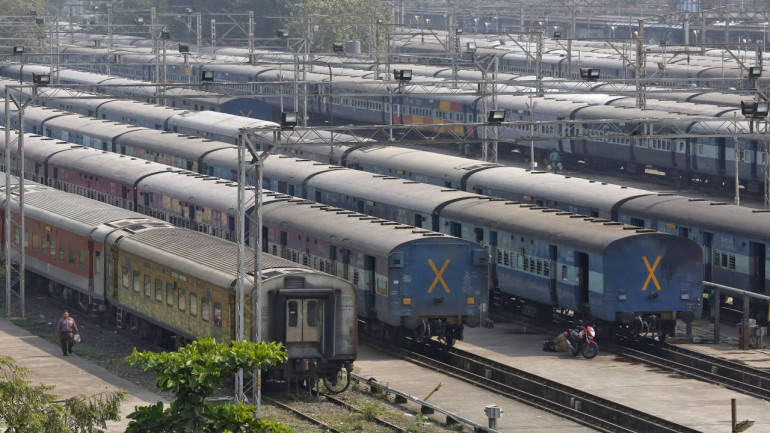The previously unreported figures will make uncomfortable reading for Prime Minister Narendra Modi, the son of a train station tea seller who set out plans to overhaul the world's fourth largest rail network after he took power in 2014.

India's mammoth state railways, much of them stuck in colonial times, have missed earnings targets for the third straight year and debts have shot up, documents seen by Reuters show, raising doubts about an ambitious modernisation drive.
The previously unreported figures will make uncomfortable reading for Prime Minister Narendra Modi, the son of a train station tea seller who set out plans to overhaul the world's fourth largest rail network after he took power in 2014.
Modi's $133 billion, five-year programme backed by private and public investment aimed to boost passenger and freight volumes, lay new tracks, introduce modern trains and drive growth to help meet ambitious economic targets.
Of that, about $32 billion, or less than 25 percent, was spent in the first two years.
Some rail officials say it takes longer for investments to bear fruit, but nearly half way through the plan, the sector's performance has deteriorated according to some key measures.
"Without surgery, the railways can't become commercially viable," said a senior government official who deals with the network's finances.
Internal government documents show that under Modi, Indian Railways' operating ratio - a gauge of efficiency measuring expenses as a proportion of revenues - has slipped to the worst level in 15 years.
The documents also show gross traffic earnings, which make up the bulk of revenues, would fall short of the target by over $3 billion in the fiscal year ending last month.
Revenues were insufficient to cover expenditure, and funding via market borrowing rose to about 22 percent last year from an average of 8 percent between 2010-15. The railways now owe $20 billion, up $7 billion in the last three years.
INVESTMENTS "TAKE TIME"
A senior railways ministry official, responding to questions from Reuters, said increased borrowing to fund new investments could not be expected to yield immediate results.
"Railway projects have a long gestation, hence revenues from projects will take time to flow," the official said in emailed answers, adding that they would generate sufficient revenues over the next three to four years to pay debts falling due.
He also said a drop in freight revenues stemmed from a strategic decision to enhance volumes by cutting charges, while passenger numbers had "increased after a gap of many years".
The official did not provide further details, and the latest passenger data for Indian Railways are not publicly available.
"These railways numbers cannot be solved overnight," said Bibek Debroy, a government adviser who has drafted a reform blueprint for the railways.
He proposes unbundling the railways into separate units to operate track and traffic, and allowing private players to run train services.
Private money has been slow to flow, however, amid uncertainty over the return on investments."If the railway comes out with the right project structure which allows the private sector to have adequate and assured returns, investment in the railway sector will pick up," said Rajaji Meshram, director at KPMG India.



.jpg)
.jpg)



0 comments:
Post a Comment